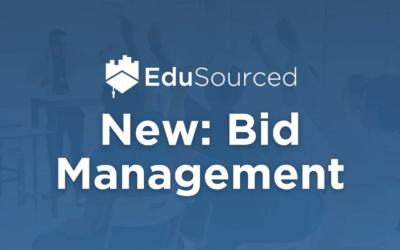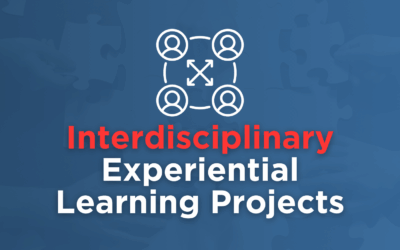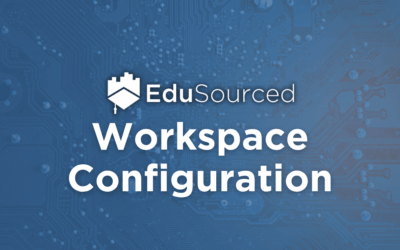While we could not attend every session, below are highlights from Co-Lab 2019 and thoughts on the three we did attend:
Co-Lab 2019 Session: Research Collaboration between Academia and Industry: Lessons from the Trenches
Presenters:
Mikhail Wolfson, Assistant Professor of Management at Kogod School of Business, American University.
Susan Zhu, Senior Researcher, Department of Research and Insights at Society for Human Resource Management.
This session addressed how business schools and industry collaborate on research projects providing value for both the industry and academic partners.
The presenters provided three key recommendations for forming connections with industry:
- Emphasize shared goals and look for win/wins by starting with your partner organization’s issue and building research around it rather than only bringing your own research goals to the table
- Communicate your business problems, broadly, to your research partners to work together to find common ground for ideas to research
- Establish early your needs for company data and any other resources. Be upfront about your needs and expectations
An audience member shared that their faculty may be too focused on their particular topic or interest and therefore, she advises industry partners to work directly with the Dean identifying relationships within the school. An audience member from Drexel Lebow (the hosting school for Co-Lab 2019) reports that they formed a “Gateway” for industry to connect with the business school centrally, to solve this challenge of “siloed” relationships with individual faculty.
Kenan Flager at UNC Chapel Hill has a similar initiative: a unified industry contact office who then works with department chairs and offices within the school. This approach simplifies the experience for industry, the attendee reports.
We see time and time again at EduSourced that student projects with industry suffer from this same challenge of silos as industry research. We have developed a product feature to help: a single project submission form for the entire college to funnel general project proposals and then the ability to send them to the appropriate department to be matched with students and faculty who are a fit.
Co-Lab 2019 Session: Coding and App Development in Business Education
Apple shares its results to the Co-Lab 2019 audience from their collaborations with business schools to bring coding and app development to the classroom.
Presenters:
Haya Ajjan, Associate Professor of Management and Director of the Elon Center for Organizational Analytics, Love School of Business at Elon University
Andrew Currah, Education Development Executive, Apple
Jake Hansen, Market Segment Executive, Apple
The presenters from Apple explain that Apps are now the lifeblood of corporate communication, citing several companies with a large count of iOS apps for internal use. As an example, British Airways has 40+ apps that are unavailable in the public App Store.
How many apps have you used today? 10 years ago the answer was zero.
Andrew Currah, Apple
The presenters from Apple report that several major corporate partners are standardizing their app development around iOS, including Salesforce, whose higher education product is meant to allow schools tracking of their students from “cradle to grave” including recruitment, during their education and even optimizing engagement with them as alumni.
We are currently working with partner schools to develop an EduSourced Salesforce integration. This integration ensures that industry project work is included in both the student and corporate partner’s history as noted in Salesforce, providing for a more complete depiction of students.
The Apple representatives stated the need for professionals who can bridge technical and non-technical teams. For this reason, training business students in software development can be valuable, even if they will never develop software professionally. To help with this, and to promote their technologies within the education market and to students, Apple is offering curriculum in Swift, Apple’s programming language.
Historically, the Swift curriculum has been available online, free to anyone willing to learn. But as with ad-hoc learning generally, completion of the program lagged expectations. For this reason, and presumably to further bolster relationships within Higher Education, Apple is now partnering with business schools to offer this curriculum to their students. Ohio State University Fisher College of Business and Elon University Love School of Business are cited as two successful examples.
Co-Lab 2019 Session: Companies are Obsessed with Lifelong Learning, so Where do Business Schools Fit In?
Presenters:
Mike Malefakis, CEO and Associate Vice Dean, The Wharton School at the University of Pennsylvania
Molly Nagler, Chief Learning Officer at PepsiCo
Dean Malefakis reports to the audience at Co-Lab 2019 that they talk about lifelong learning a great deal at Wharton, but that they don’t have a clear definition of it. There is, however, a central component to Wharton’s lifelong learning strategy: online education. The theme of their lifelong learning: scope, scale and reach (a notable strategy for an Ivy League business school with a very selective acceptance rate). The premise of lifelong learning for Dean Malefakis is the changing timeline of the human life. The old “episodic” model of going to school, then working for 30-40 years then retiring is out obsoleted when people live 100+ years, as half of those born in 2016 will, according to an unspecified study cited by the Dean.
With the stated ambiguity of lifelong learning even at a school like Wharton where it is taken so seriously, defining this was opened up to the audience. Several attendees offered ideas and statements related to the concept, but a definition was not found. Multiple attendees linked lifelong learning to the idea of mental agility, being adaptable to an “ever changing” world. There is a clear sense the future is happening to us whether we are prepared or not and the faculty and staff on hand seem not to have an immediate answer to this, though the issue is generally recognized.
Dean Malefakis puts forth a quadrant for thinking about education: Now and Future, Skills and Knowledge. An example of a now skill: watching a YouTube how-to video to fix your leaking sink. Future knowledge: providing for adaptability to unknown needs of work in the future.
Molly Nagler was recruited out of academia to join PepsiCo expressly to help with their internal lifelong learning, which is viewed at Pepsi as a defense against both employee turnover and competitive disruption. Notably, Molly shares that Pepsi sees inherent value in ongoing education and that they do not look for direct ROI on these activities.
Molly outlines our current scramble for adjusting education to a never-ending wave of innovation: we had the industrial revolution, then the information revolution and now we have the inclusion revolution, as she says. Molly explains that employers have a responsibility to accommodate inequality among people. Artificial intelligence is not mentioned here but it feels inescapable as a backdrop for any concern of humans being displaced from work.
The new workforce wants a portfolio of skills that are transferable. They want a job that prepares them for their next job, rather than the old model seeking stability and a permanent commitment from an employer.
Molly Nagler, PepsiCo
What about STEM jobs? Counter-intuitively, while STEM starting salaries are generally impressive, wage growth as employees mature in the organization grows much more slowly than many non-STEM career tracts. Dean Malefakis attributes this to rapid innovation in STEM fields, the downside of which is a rapidly outdated skill set among its workforce. The Dean suggests this skill obsolescence is to be expected of all career paths of the future.
Breaking out of the 10%: The 70 – 20 – 10 rule. This rule holds that most learning occurs on the job (70%), 20% from mentoring and 10% from intentional training or formal education. This ratio presents a challenge for business schools and the topic was addressed, how do we get out of the 10%, as educators? This issue does not just apply to college faculty, but do educators in corporate, too.
For employers, the recommendation was made to have your participants bring their actual problems they work on, for work, to this corporate classroom environment. This makes their work in the program real while benefiting from the learning as-you-go that works so well at 70% of our learning, while providing a supportive, instructional environment to fill in gaps and ensure the lessons learned are more complete and less ad-hoc. For business schools, providing real world projects from industry and allowing students to select into them, makes the learning more urgent and real (70%) and less academic (10%)
The most interesting audience comment was that people prefer to learn socially, alongside other people, perhaps limiting the utility of online learning. That is unless those social signals can be automated and scaled via, for example, gamification. Another attendee reinforced this sharing success with an online language program he is personally taking that is heavily gamified, offering constant badges and levels to be shared with his peers and fellow learners.
Key advice from an academic who landed in corporate
Molly shares from her journey from working at Yale School of Management to doing internal education at Pepsi:
- Take the sacrifice out of learning by having students learn from things they are already working on in their careers, whenever possible.
- As a business school, get your learning content on as many platforms as possible and do not rely only on only Coursera or similar.
- Rather than only emphasize competition with other business schools, look to fresh opportunities like providing education during the commute. Innovations like autonomous driving creates new opportunities for people to learn instead of drive, as just one example.
- Create “stackable” learning so people can progress incrementally. Imagine starting with a “Leadership in 60 Seconds” course and offering additional, deeper levels to be pursued beyond it as needed.
- Break into the 70% in the 70 – 20 – 10. Think about personalized opportunities for students to make it real for them and not just an academic exercise.
Want to learn more about best practices specifically for industry projects in the classroom? Check out our Fieldguide for Experiential Learning. Want to know more about Co-Lab 2019? Visit AACSB.



